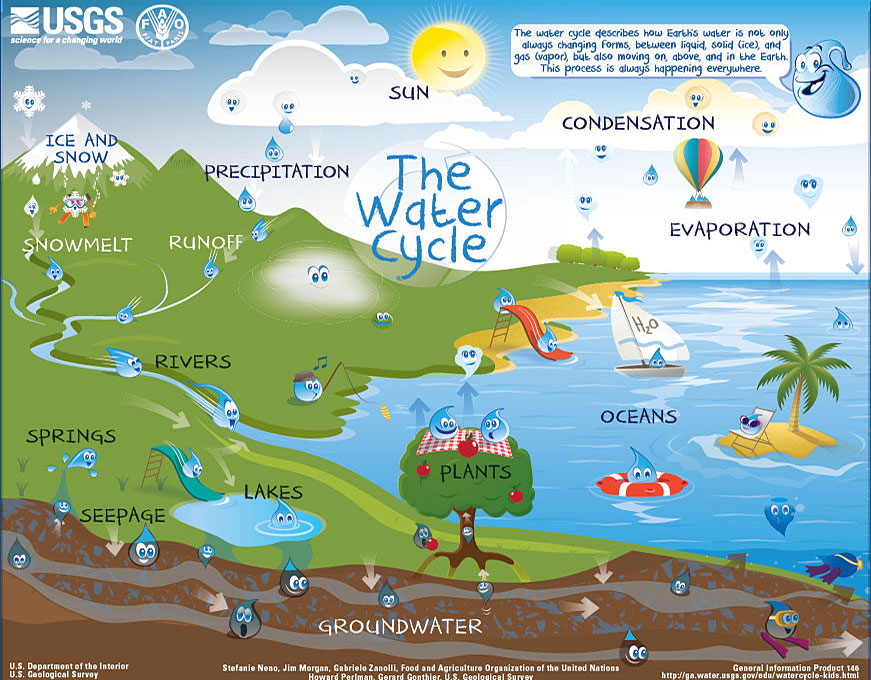 Water is one of our most precious resources, but often it is misunderstood and taken for granted. People pollute our streams and waters forgetting that eventually they too will need that water. Industrial runoff and other hazards are impacting our water not only in the exact location they are in but all water everywhere. It is vitally important that people understand that the glass of water you are drinking right now could very well of been part of an industrially compromised river just a few months ago and that before that, it could have been part of a giant ice floe. All water goes through the cycle, and it is important to remember that. Most of us learned the water cycle and each of the stages when we were in school but have forgotten it over time. So, here is a refresher course on the water cycle.
Water is one of our most precious resources, but often it is misunderstood and taken for granted. People pollute our streams and waters forgetting that eventually they too will need that water. Industrial runoff and other hazards are impacting our water not only in the exact location they are in but all water everywhere. It is vitally important that people understand that the glass of water you are drinking right now could very well of been part of an industrially compromised river just a few months ago and that before that, it could have been part of a giant ice floe. All water goes through the cycle, and it is important to remember that. Most of us learned the water cycle and each of the stages when we were in school but have forgotten it over time. So, here is a refresher course on the water cycle.
- Water starts either in the ground, in wells and springs feeding the roots of trees and plants, or in above ground water sources such as lakes, rivers and oceans.
- From the smallest puddle to the biggest ocean, the water is ready to begin the cycle. The sun beats down on the water, warming it and turning it into a vapor or steam that rises into the air. The smaller the water source the quicker this process, which is called evaporation, will occur. A small puddle, for instance, does not just dry up; it evaporates.
- Once in the air, the water (which is now in vapor form) will cool and form clouds. Once the clouds are full, the water (which is once again in liquid form) will fall. How it falls will depend on the temperature of the air and the ground.
- The liquid that falls from the clouds is called precipitation, and it can be either rain, sleet, hail or snow. Again, this will depend on temperature conditions.
- The final part of the cycle is called collection. The precipitation that falls can be collected in several different ways. If it falls as snow and the ground is cool enough, the snow will collect on the ground. Eventually the snow will melt and some of it will run off into the ground or to the nearest body of water. Some of the snow will melt and then evaporate. If the ground is too warm or the precipitation was in liquid form it will either be directly absorbed by the ground to become ground water once again or will run off to a nearby stream, lake or river. Small water sources sometimes flow into larger water sources, so the water running out of your front yard could eventually end up in the ocean although it will probably be through the cycle a few more times before it gets there.
- Plants and trees are part of the process. While humans sweat, plants transpire. This process is where water will be removed from the leaves of the tree and will also evaporate. Trees draw water up from the soil and then transpire, helping the water cycle continue.